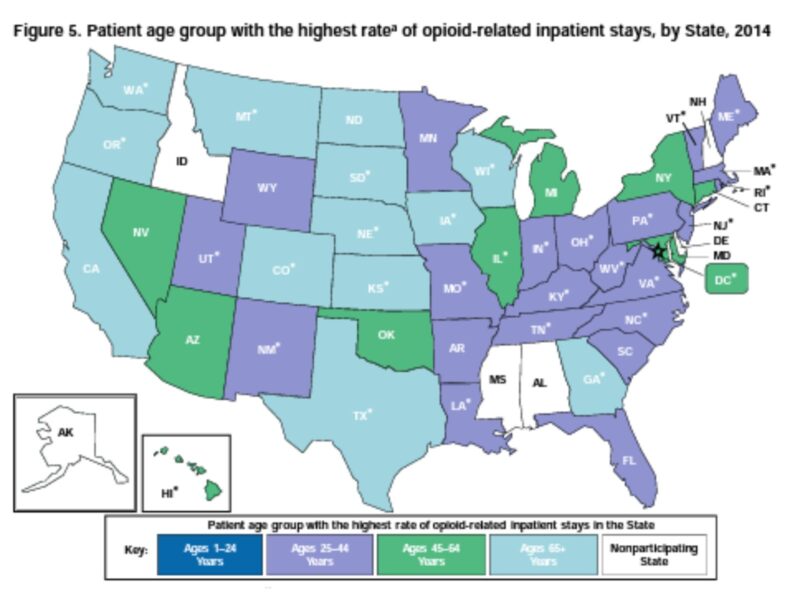Increased Opioid-Related Inpatient stays and ED Visits

A recent statistical brief from the Agency for Healthcare Research and Quality (AHRQ) provides valuable information regarding patient characteristics for opioid-related inpatient stays and emergency department (ED) visits in the US and within 44 states and the District of Columbia. The brief comes from AHRQ’s Healthcare Cost and Utilization Project (HCUP), which is the largest all-payer encounter-level collection of longitudinal health care data in the US. AHRQ found increases in opioid-related inpatient stays and ED visits nationally among both men and women from 2005-2014. The brief reports that men and women may access care at different points, as opioid-related inpatient stays increased faster for women than men nationally, while men consistently experienced higher rates of ED visits. These patterns were also observed at the state level; females had a higher rate of opioid-related inpatient stays than males but males had a higher rate of opioid-related ED visits.
When the researchers examined differences among age groups, they found that the highest rates of opioid-related inpatient stays were among those age 25-44 and 45-64. Individuals age 25-44 experienced the highest rates of opioid-related ED visits while the overall rates of ED visits increased for all age groups. The rate of opioid-related ED visits was highest among patients age 25-44 for all participating states, whereas there was substantial variation among the states in age differences for opioid-related inpatient stays. In 22 of the 45 states (44 states and district of Columbia) the rate of opioid-related inpatient stays was highest among patients aged 25-44, in 9 states the rate was highest among patients 45-64 and in 13 states the rate was highest among patients over the age of 65. Pennsylvania is one of the states with the highest rate among patients age 45-64, which is consistent with a recent report from the Philadelphia Opioid task force that show a significant increase in opioid related overdoses in the 45-54 age group. The Philadelphia task force suggests the peak in overdoses among people age 45-54 “likely represents a consequence of recruitment of adults into drug dependence by over-prescribing of opioids.”
Although the AHRQ findings from HCUP l may be a useful way to examine trends in opioid-related health care utilization, it is also important to understand the limitations of this data source. Opioid-related visits were classified by the International Classification of Diseases, Ninth Revision, Clinical Modification (ICD-9CM) codes. Several studies have noted that ICD-9 codes, such as those used in the AHRQ report, have a positive predictive value for overdose visits and can be used to monitor ED overdose visits with high specificity. However, the diagnostic coding is not very sensitive and may under report the number of overdose-related ED visits. Thus, the effect of the opioid epidemic on opioid-related inpatient stays and ED visits maybe even greater than reported in HCUP, and additional research is necessary to further improve our understanding of current trends and state-level variations in opioid-related health care utilization in the US.